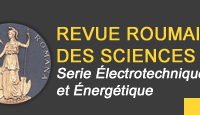Paper title: DEEP UNDERSTANDING OF AUGMENTED FEEDBACK AND ASSOCIATED CORTICAL ACTIVATIONS, FOR EFFICIENT VIRTUAL REALITY BASED NEUROMOTOR REHABILITATION
Author(s): OANA-MARIA FERCHE, ALIN MOLDOVEANU, FLORICA MOLDOVEANU, MARIA-IULIANA DASCĂLU, ROBERT-GABRIEL LUPU, CONSTANȚA-NICOLETA BODEA,
Abstract: This paper presents the state in which the TRAVEE (Virtual Therapist with augmented feedback for neuromotor rehabilitation)
project has ended, what it has achieved, why it should be pursued, as well as outline a few of the main directions in which the
research started by TRAVEE must be continued. For this purpose, the paper begins by presenting information on the necessity
of using technology in medicine, with a focus on medical rehabilitation. A state of the art regarding the use of technology in
medical rehabilitation is then provided, especially concerning use of EEG data in assessing the rehabilitation session results. We
then present – briefly – the architecture of the TRAVEE system, with its virtual reality module, that uses multimodal input data
to provide augmented feedback through various output channels (visual, haptic, robotic, functional electrical stimulation – FES).
In the following sections, the paper discusses the observations that were made during the in-vivo testing sessions of the described
system, as well as during the clinical trial to which it was subjected. Based on these observations, the directions in which the
research must continue are outlined: the study of the effects of various rehabilitation session augmentation level in terms of
cortical activation through electroencephalography (EEG), the study of the effects of augmentation on spasticity, the influence of
the virtual environment (VE) on EEG data, as well as a comparison between visual and mechanical augmentation. The paper
also proposes methods for each study path. It is very important that the results of TRAVEE are further studied and understood
as it only scratched the surface of a very sensitive domain and it set the foundation for a high-quality research with potential
great outcomes.
Keywords: Virtual reality, Rehabilitation, Feedback augmentation, Electroencephalography (EEG) Year: 2018 | Tome: 63 | Issue: 2 | Pp.: 233-239
Full text : PDF (231 KB) |



